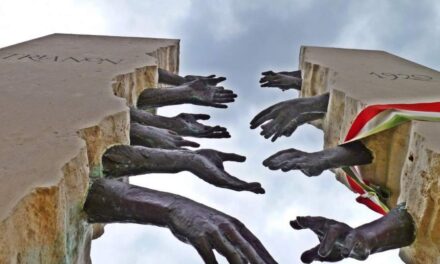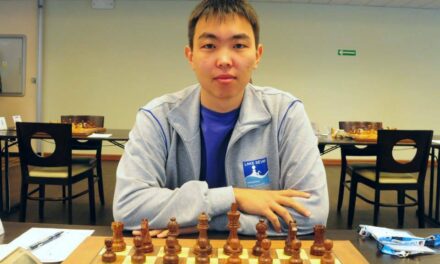"Europe needs Hungary ... which has never allowed itself to be defeated"
One of the most controversial events in Hungarian history is the turn of the millennium, when the Principality of Hungary was replaced by the Kingdom of Hungary. The political and historical lies that had been suppressed for decades in the second half of the 20th century, clouding the Hungarian national consciousness, were changed by the explosive power of the presentation of a rock opera. When the musical play István, a király was staged in front of a large audience in Városliget on August 18, 1983, its impact was indescribable. The author couple Levente Szörényi and János Bródy created the musical work based on Miklós Boldizsár's drama Ezredforduló. It was not just an entertaining musical stage production, but caused a serious historical and social debate, the waves of which did not subside for decades.
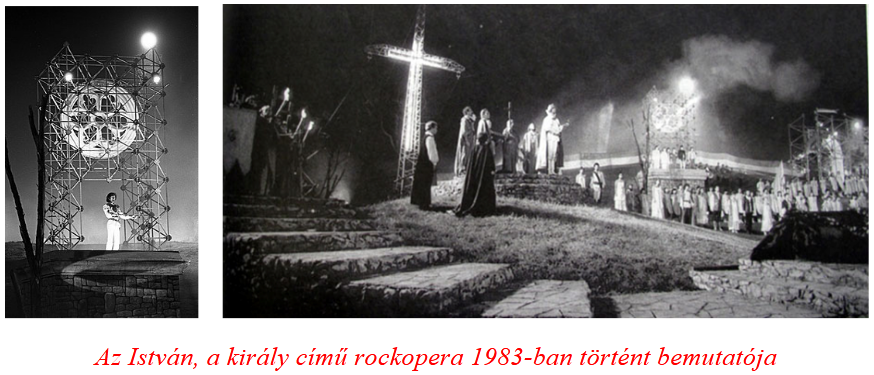
In the past four decades, the rock opera has toured the Carpathian Basin and even performed on international stages, each time with great success.
The work was filmed, performed in most of the country's theaters, promoted at concerts, and even an opera was written about it. Schools, communities of settlements, and art circles taught and performed the fate-changing drama of our history before narrower and wider audiences.
A turning point, since the nomadic, wandering way of life in the East underwent a radical change during the reign of Prince Géza (972-997) and his son István. Father and son created a country surrounded by borders that partially followed the Western model, and with that they also laid the foundations of the Christian Church in the Carpathian Basin.
created
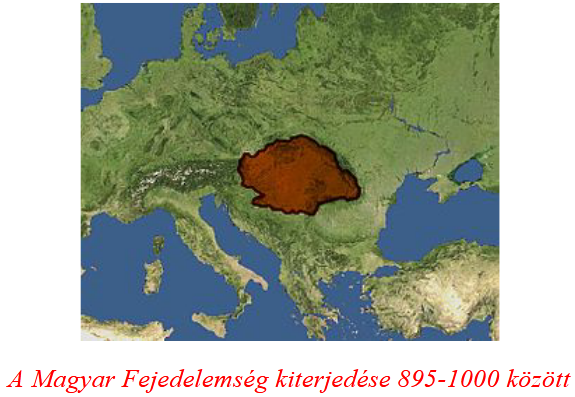 a feudal state based on the Western model. After Géza's death in 997, according to the ancient Hungarian legal system, the oldest male member of the Árpád house would have inherited the princely throne, as had happened in all previous cases. However, Géza broke the centuries-old practice and nominated his son Vajko to the throne. However, the rightful heir to the throne, Koppány, did not accept this.
a feudal state based on the Western model. After Géza's death in 997, according to the ancient Hungarian legal system, the oldest male member of the Árpád house would have inherited the princely throne, as had happened in all previous cases. However, Géza broke the centuries-old practice and nominated his son Vajko to the throne. However, the rightful heir to the throne, Koppány, did not accept this.
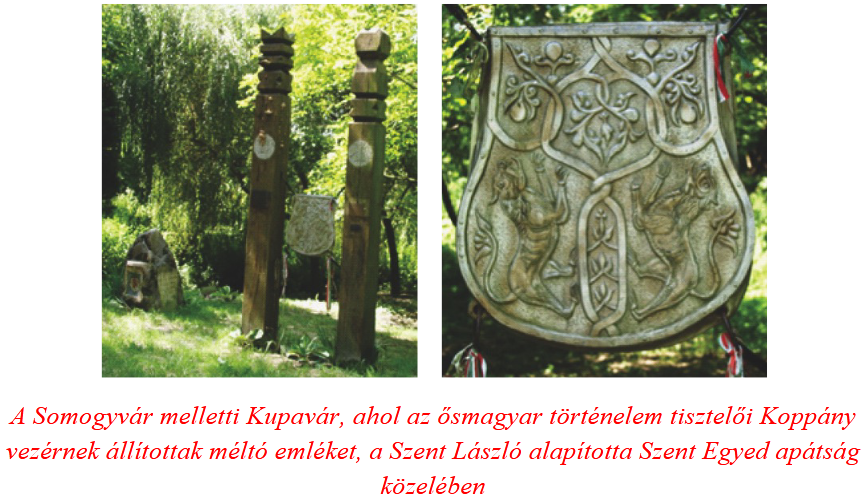
An armed clash between Hungarians and Hungarians was inevitable. The Lord of Somogyszág, leader Koppány, marched from today's Somogyvár (Kupavár) at the head of his army towards Veszprém, where Sarolt, Géza's widow, was staying. The decisive battle took place near Sóly, near Veszprém.
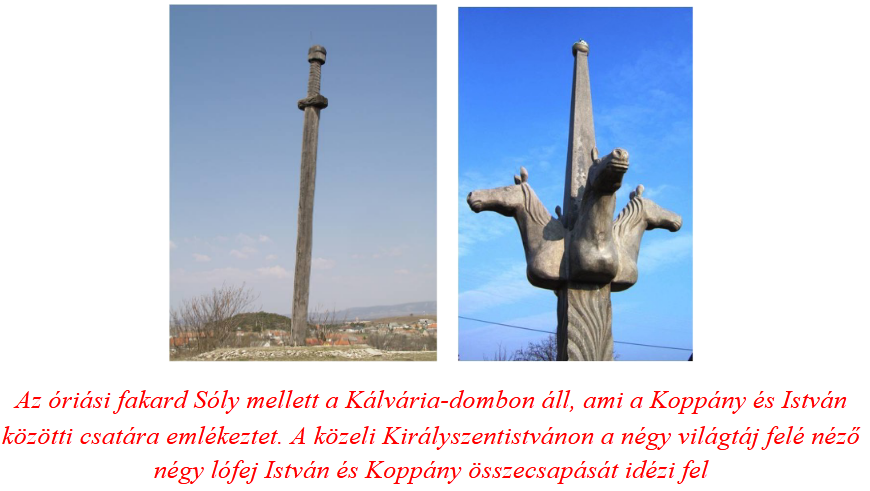
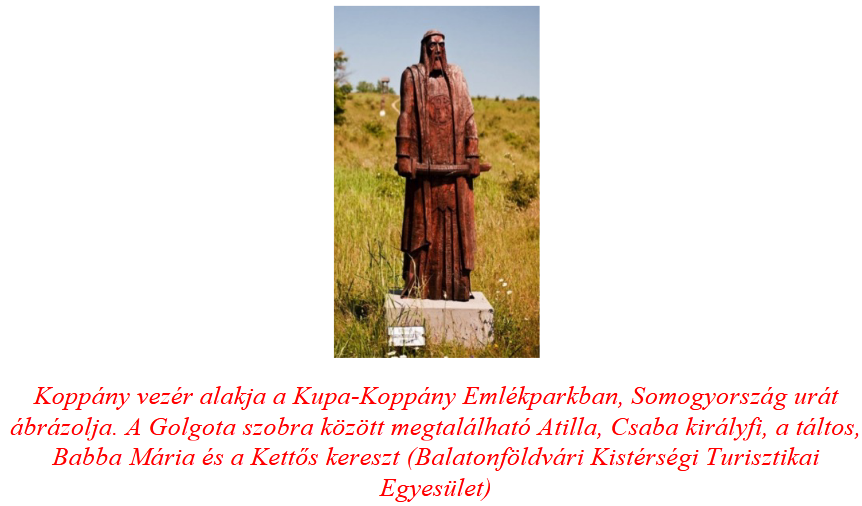
In Somogy county, on the southern coast of Lake Balaton - near Somogyvár - the memory of leader Koppány can be found in several places. Szólád, located about six kilometers from Balatonszárszó, is worth mentioning, where the Kupa-Koppány Memorial Park, also known as the Szkíta Golgotha, is located. According to legend, Prince Koppány was buried in this place, perhaps on Nezde Hill. The locals believe that Koppány was not even quartered, that is just a falsification of history.
A long line of books, studies, and lectures thus prove on the one hand, often with sharp criticism, the treasonous policy of Géza and István. On the other hand, the "academic haughtiness" of the other side disposes of the archeologists with the caustic sneer typical of anointed scientists. I do not have the honor to do justice to the scientific and truly well-prepared position of the two parties. However, I can confidently say that there is still a state called Hungary today, which has been continuously attacked, slandered, and tried to destroy for a thousand years, starting with Árpád and also with István. The Mongols, Turks, Germans, and Slavs succeeded in this in part, and what gave the Trianon blow to the English and French. Because the country we know from the time of the Principality of Hungary only exists with its territory shrunk and its population dwindling.
But it exists!
Years ago, Attila P. Szelestey and his colleagues decided to tame the Koppány-István dispute, which sometimes muddies the memory of our historical greats, into peace.
As a sign of reconciliation, a statue of Péter Matl would be erected in Veszprém, which would express this peace. Putting the two people next to each other would mean the symbolic reconciliation of the Hungarian people and recognition of each other's values. After all, both Koppány and István were great figures of Hungarian history, protagonists of a fateful era.
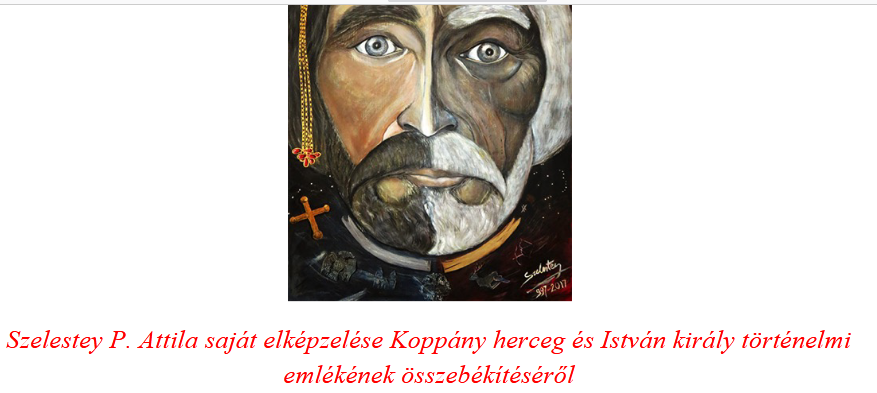
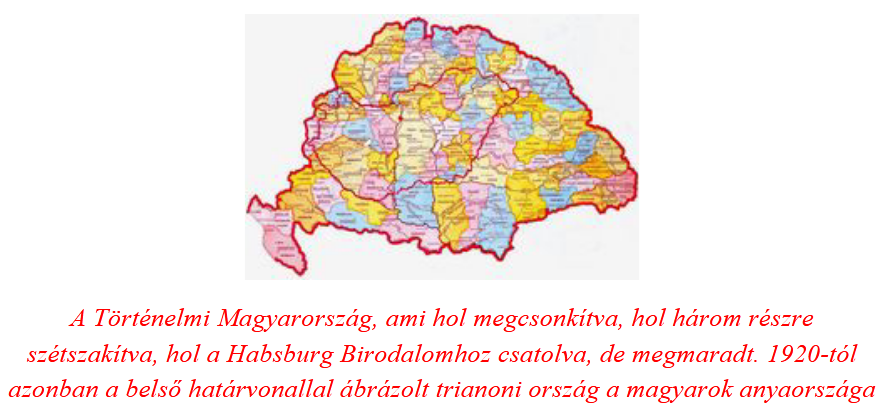
Who is responsible for this?
History does not like ...what would have happened if our predecessors had done this and this decision, political event differently? incipient reasoning. History examines facts, which can then be explained in many ways. The fact is that Vajk defeated Koppány with the help of German knights, and in 1000 he was crowned with the crown received from the Pope of Rome according to the Western Christian legal order. The fact is that serious internal fights began between the supporters of the old and the new order. It is also a fact that István married the Bavarian Gizella, who brought many converts and priests with her. These German, Italian, and Czech priests and the knights and settlers who accompanied them and protected them destroyed everything that represented Hungary's ancient past.
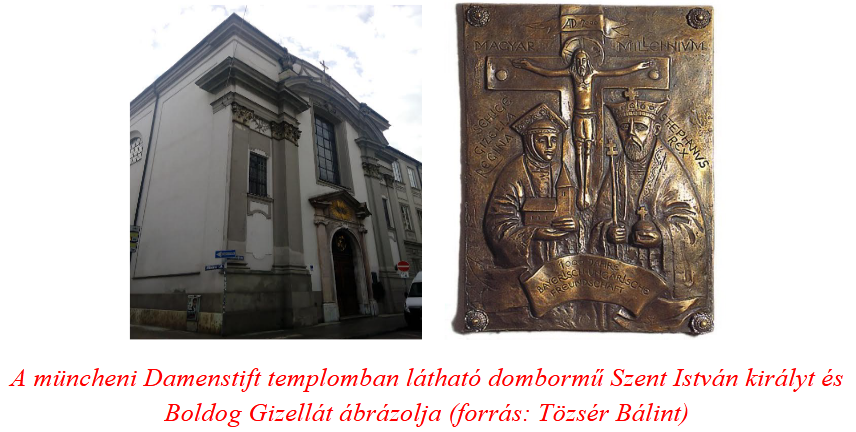
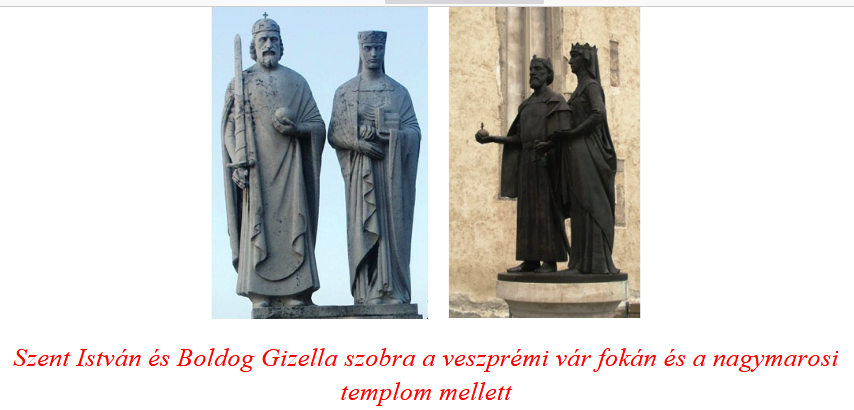 It is also a fact that while Henry the Holy Roman Emperor, Gizella's brother, was alive, István's kingdom was not attacked from the west.
It is also a fact that while Henry the Holy Roman Emperor, Gizella's brother, was alive, István's kingdom was not attacked from the west.
But it is also a fact that when Henrik - after whom István and Gizella named their son Szent Imré - died, the emperor Konrad who followed him had already attacked Hungary. But it is also a fact that King István inflicted an ugly defeat on the invaders in 1030. This policy of protecting the homeland and rejecting all foreign influence was the law and example for three centuries for all Árpád kings who claimed the heritage of Árpád and István as their own. Unfortunately, there were exceptions, but we know about them that they grew up under foreign influence and came to the Hungarian throne with the help of foreign power. Among them can be mentioned Péter, Solomon, or indeed III. Andrew. It is often brought up among those who condemn István that he married a foreign (Bavarian-German) woman, who then assumed the role of a powerful queen. Let's not forget that your great predecessor, whom all Hungarians look up to today with pride, King Atilla of the Huns, also married a German woman. However, it is also true - according to some assumptions - that this Krimhilda (Ildikó) became the cause of Atilla's death.
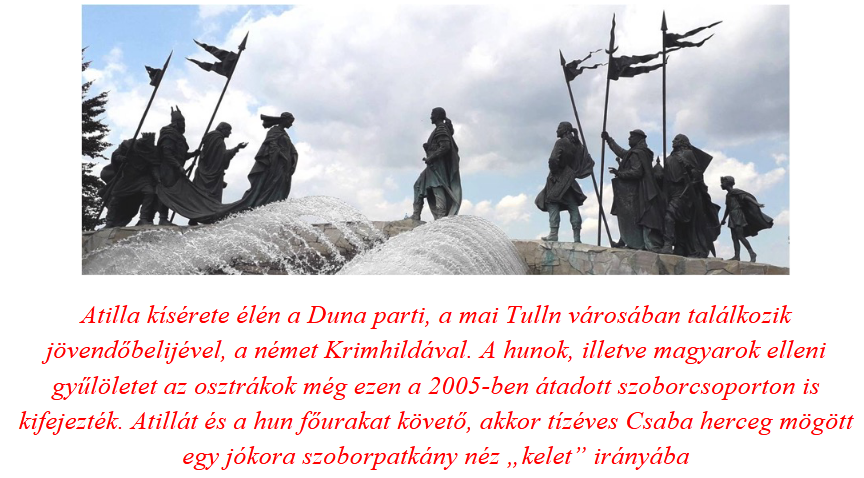
Let's not forget that in the 11th century, Yaroszláv Bölcs, the Grand Duke of Kiev, who was aptly called the "father-in-law of Europe" - far east of Hungary - made alliances with seven European dynasties and states by marrying off his children. Among many similar examples, we can mention the highly respected King Matthias, who brought a wife from Naples in the person of Beatrix. More than likely, like Attila, this woman also brought our great king's doom. We can close the line II. Following the example of Ferenc Rákóczi, whose exemplary personality and positive historical role cannot be questioned by any sane Hungarian, he also married a German princess.
It is also a fact that Géza already sent 12 of his main men to the German imperial assembly in Quedlingburg on Easter 973.
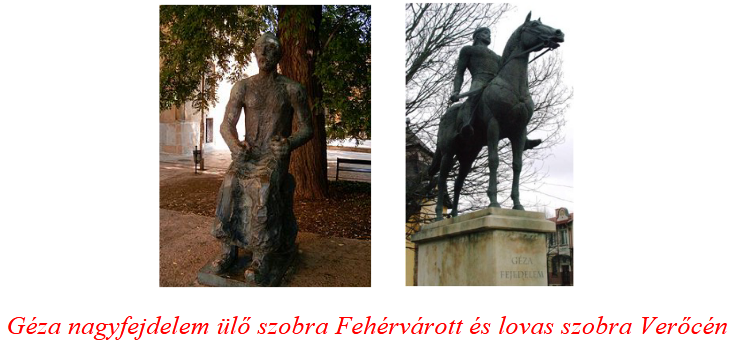
He did this with the aim of reaching an agreement with the Western powers to resolve their differences. Géza, in contrast to the delegates of many other countries, did not even go personally at the invitation of Emperor Otto, thereby expressing his independence as well as that of his country. The Árpáds insisted on this independence and self-reliance in the following centuries as well. Due to their talent and strength, they were able to do this against both the emperor and the pope. However, it is also a fact that the Hungarian prince renounced the area between Linz (Enns) and Sankt Pölten (Traisen), which are about a hundred kilometers apart, for the sake of peace. Géza forbade further Hungarian campaigns, although they had already been completed before Géza's principality. It is characteristic of Géza's strictness and consistent policy that the introduction of the new order prevailed in a large part of the country. After his death, only Gyula from Transylvania, Ajtony from the south and Koppány from Somogy retained their ancient rights and independent power. The Grand Duke sought peace, but he had to create the conditions for this. Among them, four of his five daughters were married to foreign princes, and one was married to Aba Sámuel. The defensive battles taking place in the west (on the territory of today's Austria) I. and II. They led to further territorial losses against Ottó and Henrik Civakodó. With the abandonment of the Bécsi Basin, the new border was already formed at the Lajta River. At that time, the knights Pázmány, Hont, Vecelin and Orci came to the country, who then played a decisive role in the fight against Koppány. Among the converting priests, Bishop Adalbert of Prague stands out, who is revered as a saint not only by Hungarians, but also by Poles. Adalbert and his brother Gaudentius were martyred in 997, in the Vistula estuary, during the conversion of the Prussians.
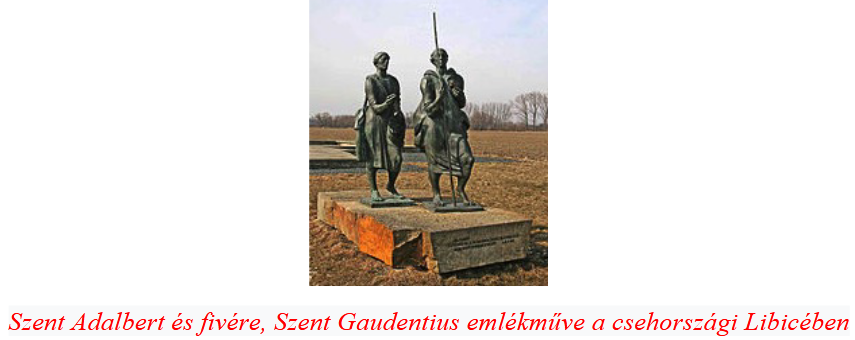
The Hungarians, who have been constantly accused of xenophobia for a thousand years, are the friendliest and most accepting people in the eastern half of Europe. The proselyting priests could also feel safe in the Carpathian basin, since no priests were murdered between 970 and 1044, which was not typical of other countries in the region. From 1044, the Hungarians, who kept the Old Hungarian religion, were hit by further attacks, which often resulted in counter-attacks. These were the so-called "pagan rebellions". Our ancestors were not pagans. After all, Koppány and his entire court had already received baptism according to the Greek rite - just like Géza and his followers. In any case, in 1046, in connection with the feud for the throne, Bishop Gellért and his companion were martyred on the banks of the Danube in Buda as a result of the Vata rebellion.

One of the most sensitive aspects of the new order's occupation of space is the destruction of ancient Hungarian monuments, including the material monuments of runic writing.
This is a particularly great loss, because along with the Runic memories, a lot of knowledge has also been lost, which, if we knew, we would certainly have stronger roots today. (This was our library burning in Alexandria.) But even the little that remains gives us such strength that it has nourished and made our culture, language, and traditions incomparably rich for a thousand years. They exterminated our táltos, the people who saw and knew, our world that also believed in one God, our hair and clothes, our yurts, cemeteries, and everything that connected the Hungarians to the rich Eastern world. But that was not the end of the destruction. Decades and centuries later - and practically even today - we are a barbaric and uneducated people in the eyes of the West.
Would we be a barbaric and uneducated people? Let's pick out the "change of faith" from the many counter-arguments. The faith of the Hungarians differed, for example, from the faith of the contemporary Slavs. While the latter were people who worshiped fire and burned their dead, the Hungarians, Avars, and Bulgarians buried their dead even then. The Hungarians were able to harmonize their original faith easily - and this was a big difference compared to other peoples - with Christianity. After all, the Creator One God, the Blessed Virgin Mary, also known as the Babba Mary, was based on monotheism. Let's not forget that the cult of the Blessed Virgin was introduced by Saint István. If you like, he transferred the old faith to the new. The Hungarians are the only people for whom the person of the Virgin Mary and the Blessed Virgin are – if not in all cases – interchangeable.

As an addition to religious patience, Kublai Khan, who was set up as a "wild Mongol", was a bigot, for example. His wife, Csábi, is a Nestorian Christian, one of his main men is a Muslim, and the other one follows the teachings of Buddha. Would this have been possible, for example, in the court of the Franks? Of course not.
Were all táltos exterminated in the time of Géza and István? Who's the guy? One had to be born a Táltos, who stood out among the others with his special mental abilities and physical gifts (for example, six fingers). With his activities, he combined the roles of doctor, priest, judge, leader of ceremonies, soul healer and visionary. Suffice it to note that the tradition endowed Saint István with the knowledge of táltos, and Saint László was himself a táltos king. The name of László's táltos horse was Szög, and the name of Mátyás's táltos horse was Holdas. In a táltos trial in 1725, Erzsébet Balázsi (a woman could also be a táltos), a well-known táltos, was accused of witchcraft. To the judge's question about the role of the táltos, the defendant answered: the táltos heals, sees buried treasures underground and "the táltos fights for Hungary in Heaven."
Among the common people, the "change of faith" took place more slowly than among the leading strata.
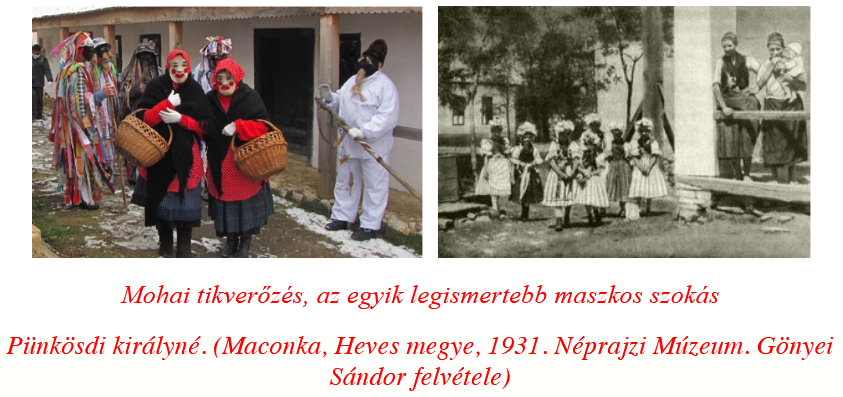
There are several explanations for this. The Latin ceremony and chants were far from the world of ordinary people, from their natural thinking. Even in the 18th century, there were "ungodly songs" on the lips of the people, and shepherds still wore their hair braids according to ancient custom. Although the priests officially persecuted such manifestations, they were treated flexibly. In many places, the customs of masking, chanting, predicting the weather, blessing food and drink, and worshiping the Blessed Virgin were allowed to remain even within the walls of the church. Such customs are still alive most strongly among the Moldavian Csangos. What strong roots, what an inexhaustible storehouse of Hungarian culture is still available to us today. From the Kodály method, through the world-class beauty and richness of folk songs, folk dances and fairy tales, the question can be asked regarding the composition of our language and, consequently, Hungarian poetry and fine arts. Did István Szent's work as a state-builder close off and exclude the Hungarian values of that time, or did it further enrich them? The answer for all Hungarians who live in this culture can only be one.

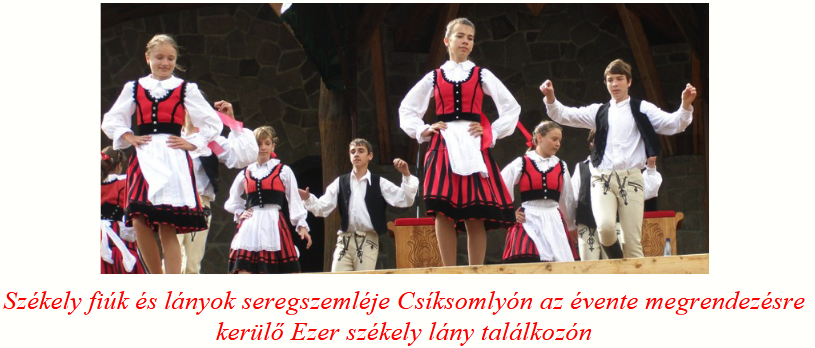
The previous parts of the series can be read here: 1, 2, 3, 4, 5, 6, 7
Author: Ferenc Bánhegyi



